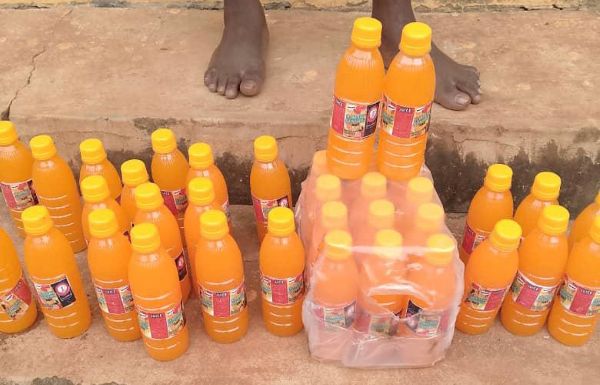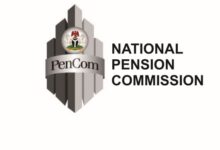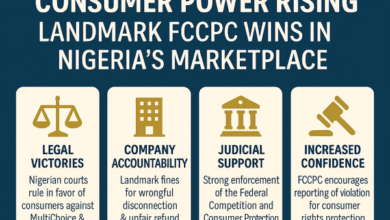BRAND REPORTBUSINESS
Anambra Police Bust Illegal Juice Factory — Toxic Fake Drinks Seized, Public-Health & Supply-Chain Risks Laid Bare

Anambra State Police have dismantled an unlicensed beverage operation in Okpoko, Ogbaru LGA, arresting a 48-year-old suspect alleged to be producing toxic counterfeit soft drinks branded “Iyi Obeleagu Juice.” The command’s Rapid Response Squad executed the bust and recovered quantities of the fake beverages purportedly manufactured without NAFDAC approval. A wider probe is underway to identify accomplices, distribution routes, and retail outlets already compromised.
Why this matters (beyond one factory)
This is not just a criminal case; it’s a supply-chain failure with public-health consequences and brand/trade distortions:
- Public health: Unregulated formulations, poor hygiene, and contaminated water/syrups can trigger acute poisoning, GI infections, and long-term organ damage—particularly dangerous for children.
- Market damage: Fake drinks and Counterfeits steal shelf space from compliant SMEs and multinationals, erode brand trust, and distort pricing in open markets.
- Fiscal loss: The state loses taxes and levies, while legitimate distributors lose margin and liquidity to shadow networks.
- Security linkage: Illicit beverage rings often share logistics with fuel adulteration and counterfeit pharma—the same playbook: cheap inputs, fake labels, cash-only distribution.
What we know so far
- Location: Okpoko, Ogbaru LGA — a dense, price-sensitive catchment that feeds kiosks in Onitsha/Upper Iweka corridors.
- Product: “Iyi Obeleagu Juice” in assorted flavors/packaging, seized on site.
- Compliance breach: No NAFDAC registration; suspected use of non-food grade inputs.
- Next steps: Police broadening arrests; NAFDAC expected to conduct toxicology profiling, batch sampling, and trace-back into informal depots.
BRANDECONOMY Analysis — How fake drinks penetrate retail
- Price pull: Wholesalers under pressure accept deeply discounted cartons with plausible barcodes but no verifiable NAFDAC number.
- Packaging masquerade: Low-cost shrink wraps, copied colorways, and counterfeit excise stamps confuse kiosk operators.
- Cash logistics: Night-time drops, no receipts, and quick turnover keep inventories off-ledger.
- Micro-influencers: Word-of-mouth “cheap but sweet” cues seed demand in parks and motor-parks before moving into markets.
Risk map for brands & SMEs
- Reputational drag: Even compliant brands suffer when consumers generalize risk.
- Channel leakage: Informal open markets and unvetted third-party riders are prime entry points.
- Working capital squeeze: Price undercutting slows rotation of legitimate stock, locking cash on shelves.
- Regulatory blowback: Expect spot checks and temporary closures of outlets with tainted inventory.
What to do now (72-hour playbook)
For Consumers
- Check NAFDAC number on every bottle; cross-verify label legibility and batch/expiry.
- Reject “too cheap” offers and blurred/peeling labels; prefer sealed cartons from known supermarkets.
- Report suspicious stock (of fake drinks) to local health authorities or consumer protection hotlines; keep photos/receipts.
For Retailers/Distributors
- Quarantine questionable stock from Okpoko/Onitsha lanes pending verification.
- Demand invoices + supplier IDs; no cash-only drops.
- Keep a NAFDAC-verified product list at the till; train staff to spot label/closure inconsistencies.
- Install basic traceability: supplier logbooks, batch entry, and daily reconciliation.
For Manufacturers (SMEs & multinationals)
- Flood channels with distinct anti-counterfeit cues: tamper-evident closures, variable QR codes, and overt security inks.
- Run mystery-shop sweeps in high-risk markets; use buy-back bounties for fake finds to map routes.
- Publish store-locator + verify-your-bottle microsites; reward authenticated purchases.
For Government/Regulators
- Joint task force: Police + NAFDAC + State Health + FCCPC for raids, on-the-spot destruction, and charges within 72 hours.
- Mandate source-of-supply disclosure at markets; non-compliant stalls face closures and fines.
- Launch public advisories (radio/IG/WhatsApp) naming affected zones and what to check before buying.
What to watch next
- Toxicology results on seized “Iyi Obeleagu Juice” samples and any hospital case spikes.
- Arrest chain: financiers, label/packaging printers, chemical suppliers, and transporters.
- Cleanup timeline: how fast authorities trace and pull stock already in the market.
- Court outcomes: deterrence depends on speedy prosecution and publicized sentences.
BRANDECONOMY Takeaways
- The Okpoko bust is a symptom of deeper channel weaknesses—porous sourcing, cash logistics, and weak traceability.
- A credible fix blends enforcement + packaging security + retailer discipline—not one without the others.
- Expect short-term volatility in beverage supply around Ogbaru/Onitsha as authorities sweep stalls; legitimate suppliers should fill gaps quickly with verified stock and visible consumer education.











